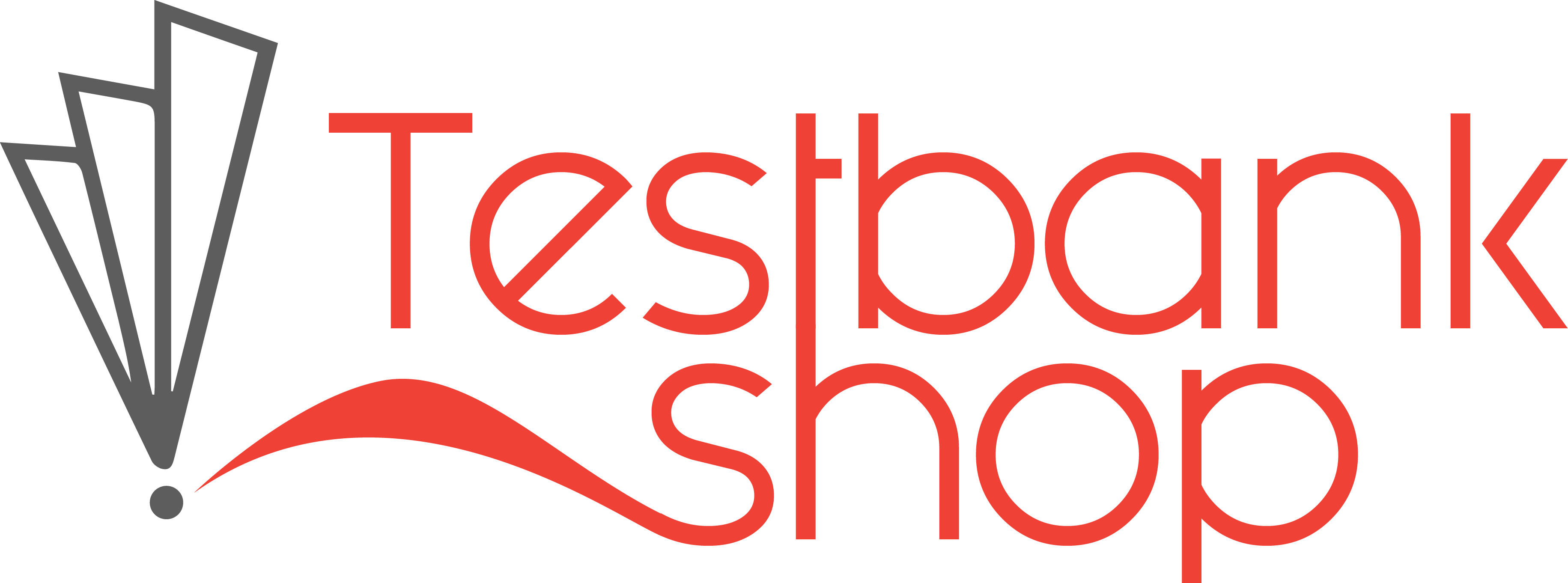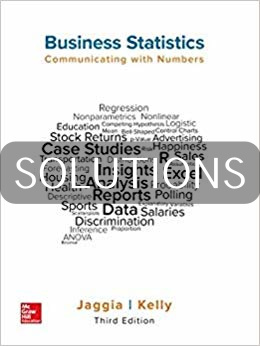Solution Manual for Business Statistics 3rd Edition by Jaggia
Chapter 01 – Statistics and Data
1-1
Solution Manual for Business Statistics © 2019 by McGraw-Hill Education. This is proprietary material solely for authorized instructor use. Not authorized for sale or distribution in any
manner. This document may not be copied, scanned, duplicated, forwarded, distributed, or posted on a website, in whole or part.
Chapter 1. Statistics and Data
Solutions
1.
a. The population is all iPhone 4 users.
b. Sample statistics
2.
The value 35 is the estimated average age of the population. It is both costly and
time consuming (likely impossible) to take a census of all video game players
and compute the actual average age.
3.
a. The population is all students enrolled in the accounting class.
b. The value 3.29 represents the population parameter since we are not
choosing a sample but drawing results from the actual population.
4.
a. The population is all marketing managers.
b. No, the average salary is a sample statistic computed from a sample, not the
population.
5.
a. The population is all elderly people. The sample consists of 949 elderly
people.
b. 22% and 17% represent the sample statistics.
Chapter 01 – Statistics and Data
1-2
© 2019 by McGraw-Hill Education. This is proprietary material solely for authorized instructor use. Not authorized for sale or distribution in any
manner. This document may not be copied, scanned, duplicated, forwarded, distributed, or posted on a website, in whole or part.
6.
Date Adj. Close Price
1/4/2016 27.99
2/1/2016 28.26
3/1/2016 30.83
4/1/2016 29.82
5/2/2016 29.31
6/1/2016 30.76
7/1/2016 30.43
8/1/2016 30.52
9/1/2016 29.17
10/3/2016 28.65
11/1/2016 30.29
12/1/2016 31.35
Source: Monthly Adj Close Price in 2016 from
Retrieved March 19, 2017.
These numbers represent time series data. The adjusted close price of the stock grew
over this 12-month period, ranging from a low of $27.99 in January and increasing to
$31.35 by December.
7.
Note: Individual answers will vary. This is an example of what an answer may
look like.
Accommodation Monthly
Expenses
Dorm $435
Dorm $480
Rental $505
Other $50
Rental $600
Dorm $425
Rental $525
Other $550
Other $325
Dorm $385
Rental $475
Dorm $400
Dorm $485
Rental $485
Other $475
Dorm $425
Rental $500
Dorm $375
Rental $625
Other $350
Chapter 01 – Statistics and Data
1-3
© 2019 by McGraw-Hill Education. This is proprietary material solely for authorized instructor use. Not authorized for sale or distribution in any
manner. This document may not be copied, scanned, duplicated, forwarded, distributed, or posted on a website, in whole or part.
This data is cross-sectional data because it can be assumed to be taken at the
same point in time. The monthly lodging expenses ranges from a low of $50 to a
high of $625. The average expense is $443.75.
8. Note: The data for this website changes regularly. Therefore, individual answers
will differ depending on the date the data is retrieved. This is an example of what
the table may look like:
Homes Price Number of
Beds Square Feet Built
1 $374,900.00 3 3073 2004
2 $112,000.00 4 1788 2005
3 $190,000.00 3 1467 2009
4 $160,000.00 4 1891 2000
5 $30,000.00 3 1026 1977
6 $317,000.00 4 3465 2004
7 $62,000.00 3 1362 1973
8 $120,000.00 3 2005 2002
9 $289,324.00 3 1705 2008
10 $355,000.00 4 3648 2001
11 $65,000.00 2 1296 1976
12 $33,000.00 4 1696 1987
13 $110,000.00 3 1376 2000
14 $310,000.00 5 3716 2001
15 $75,000.00 3 1230 2004
16 $60,000.00 3 1285 2004
17 $140,000.00 4 2217 2003
18 $178,000.00 4 1967 1998
19 $226,000.00 1 533 2006
20 $128,000.00 3 1483 2006
Source: http://zillow.com/; Retrieved August 20, 2012.
The data above is cross-sectional data. The data represents characteristics of
homes sold at approximately the same time of the year.
9.
DATE GPSAVE
Q1.2012 3631.8
Q2.2012 3667.5
Q3.2012 3653.8
Q4.2012 3750.2
Q1.2013 3417.8
Q2.2013 3252.1
Chapter 01 – Statistics and Data
1-4
The Morningstar’s based rating system is measured on an ordinal scale. The
values can be ranked and categorized but the differences between ranks are
meaningless. The data shows that 25 of the 30 (approximately 83%) of the
companies have a two or three-star rating. Only 5 of the 30 companies have
a four-star rating. None of the companies has a one-star or a five-star rating.
c. The Stock Price data is measured on a ratio scale. This type of scale is the
strongest form of measurement. There is a true zero point which allows for
the calculation of meaningful ratios between values.




